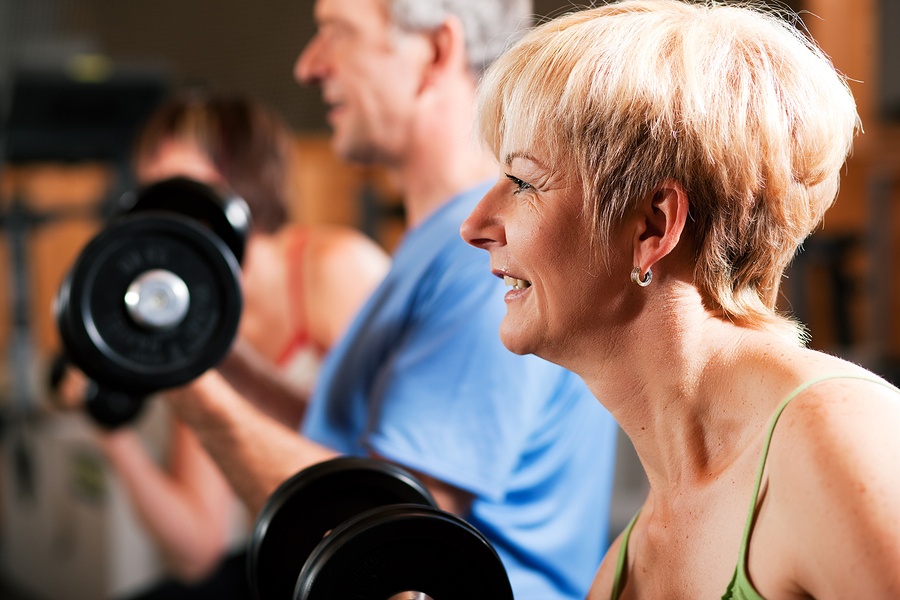Thought Leader Series: Improve the Fitness Center, Improve the Senior Living Community

 Stephan Baldwin is the Director of Business Development for Assisted Living Center, a senior living directory.
Stephan Baldwin is the Director of Business Development for Assisted Living Center, a senior living directory.
Everyone knows that fitness is important at any age, but for seniors an active lifestyle is crucial for maintaining health. Today's seniors are engaged now more than ever in their overall health and fitness levels. People in their sixties and seventies are no longer frail, helpless residents that sit on their couch watching Matlock all day.
When taking tours of senior living communities, amenities like a fitness center may make or break their decision on where to live.
Quickly and Easily Improve the Fitness Center
It can be easy to spend tens of thousands of dollars on expensive weight-training machines, cardio equipment and more to make your fitness center elite. But unless the equipment is being used properly and with the right intensity, senior residents won't see the benefits.
Group training with heart rate monitors and displays will not only make your exercise facility look like it's on the cutting edge of fitness technology, it will help your residents see and feel the results.
Heart rate monitors have become popular among high-end gyms and fitness studios, many of which don't use a lot of expensive equipment. Instead, they opt for calisthenics, dumbbells and medicine balls.
Is Heart Rate Training Just a Trend?
Heart rate training is not a fad like the Thighmaster or a Shake Weight. Monitoring heart rates for fitness goes back to the late 1970s. Seppo Säynäjäkangas, a professor in Finland, developed it for their Olympic cross-country team, according to Forbes.
The "intensity training" method took off in the '80s for many competitive distance events such as running and cycling. Eventually this type of training reached the amateur ranks as casual runners and exercise enthusiasts began utilizing it simply because it produces results.
You don't have to be an Olympic coach training elite athletes to see what this can do for your senior living community's residents. The tracking and display system will be as relevant ten years from now as it is today.
Benefits of Heart Rate Monitoring
Constantly monitoring each senior's heart rate gives you the ability to adjust each person's workout intensity while they exercise. This will help each individual exercise within his or her own capabilities and reach his or her limits without exceeding them, which is incredibly important for safety.
 Maximizing fitness time will improve several key physical challenges that seniors living in your community face.
Maximizing fitness time will improve several key physical challenges that seniors living in your community face.
- Exercise safely: Seeing each individuals heart rate in real time can help fitness instructors prevent seniors from overexerting themselves, especially for those who are new to working out.
- Track progress: Many heart rate monitors store weeks of exercise data. Accuro's products create profiles for each senior so tracking progress is a snap!
- Lower heart rate: Staying in their ideal personal "zones," seniors can increase their cardiovascular health and reduce their chances of heart disease or heart attacks.
- Maintaining muscle mass: Seniors who are inactive frequently suffer from muscle atrophy. Their strength and body weight decline until they become too weak to lift even their own bodies from chairs without assistance.
- Improved balance and coordination: There are a variety of reasons why older adults lose their coordination. Visual impairments, losing their sense of touch, and prescription medications are potential causes, among others. Exercising keeps them physically sharp and maintains their ability to balance and reduce the chance of falls.
- Increased flexibility: Aging naturally reduces flexibility as connective tissue like ligaments and tendons become stiff. Proper exercise helps keep joints limber.
Senior Heart Rate Training Zones
Monitoring heart rates are useless unless you know the maximum beats per minute (BPM) for your age. You don't need to be a doctor to find this out, just subtract your age from 220. So if you're 60 years old, your maximum heart is 160 BRM (220-60=160).
Keep in mind that residents should never try to reach this max level. According to the American Heart Association, your heart rate while exercising should be between 50 and 85% of your max heart rate to see the best results. Seniors who are new to exercise should stay closer to the 50% range.
- 55 years: 83-140 BPM
- 60 years: 80-136 BPM
- 65 years: 78-132 BPM
- 70 years: 75-128 BPM
- 75 years: 72-123 BPM
- 80 years: 70-119 BPM
- 85 years: 67-114 BPM
- 90 years: 65-110 BPM
Visitors taking tours of your senior living community will no doubt be impressed by how advanced your fitness center is when they see the heart rate display and tracking system.
More importantly, current residents will be healthier and happier as a result. Nothing will sell the benefits of your assisted living community than hallways and rooms of happy, fit seniors.
Interested in learning more about how Accuro products can take your fitness center to the next level? Download the catalog today.



Join the conversation